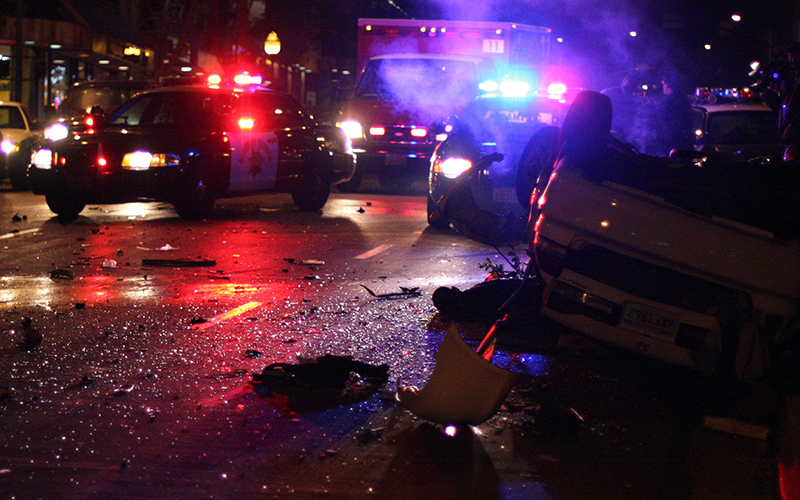
Highway deaths in Arizona rose to the highest level in more than a decade last year, even as the amount of driving appeared to have been held back by the pandemic shutdown. The state echoed the trend nationwide, where traffic fatalities rose 8% while the number of miles driven fell 13%. (Photo by Nathan Rupert/Creative Commons)
WASHINGTON – Traffic deaths in Arizona surged during the COVID-19 pandemic, even as the number of miles driven in the state appeared to be decreasing, according to preliminary statistics from 2020.
There were 1,072 deaths on the state’s highways in 2020, the most in at least the past 10 years and a sharp increase from the 980 deaths recorded in 2019, according to preliminary data from the Governor’s Office on Highway Safety.
That increase in highway fatalities came as gasoline sales in the state last year fell 12% from the year before, the biggest one-year percentage drop in sales in almost 40 years of U.S. Energy Information Administration data on sales.
The Arizona numbers mirrored a national trend: A recent report from the National Safety Council said that total motor vehicle deaths in the U.S. rose 8% from the number recorded in 2019, even as miles driven in 2020 dropped 13%.
While the pandemic likely depressed driving, Kenneth Kolosh, manager of statistics at the National Safety Council, pointed to several possible reasons it may also have played a role in “this pretty much unprecedented increase (in fatalities) we’re seeing on the roads today.”
“There is more speeding occurring. This is particularly an issue when the lockdowns were in place and the roads were very empty and we saw large increases in speed, and we’re seeing large increases in speed-related crashes and fatalities,” Kolosh said.
He also said the use of seatbelts “went way down” during the pandemic.
“Being ejected from a crash, one, it’s very life-threatening if you’re ejected from your vehicle during a crash,” said Kolosh, who added that seatbelt use is “one of the most fast and easiest ways you can protect yourself.”
The National Safety Council report said traffic fatalities across the country rose from 39,107 in 2019, when U.S. motorists logged 3.26 trillion miles on the road, to 42,060 in 2020, when total miles traveled dropped to 2.83 trillion.
The report did not say how many miles were driven in Arizona last year, and state officials said they will not have those numbers until later this year. But it’s clear that Arizona drivers were burning less fuel last year: Gasoline sales fell from an average of 8.2 million gallons a day in 2019 to 7.2 million gallons a day in 2020, according to the USEIA, with the sharpest drops coming from spring through summer months as the pandemic shutdown first hit.
Preliminary traffic fatalities reported by the state differed slightly from those in the NSC report, but they both reflected the same trend: While the report said Arizona deaths rose from 963 in 2019 to 1,014 in 2020, the Governor’s Office of Highway Safety reported fatalities going from 980 to 1,072 in the same period.
“This is the largest number of fatalities in 10 to 12 years,” said Alberto Gutier, director of the Arizona Governor’s Office of Highway and Safety.
Gutier said there may be a simple explanation for the rise in the state’s highway deaths.
“We have a problem in Arizona because we are a growing state,” he said.
Data from Gutier’s office shows there were 5.3 million licensed drivers in the state in 2019, 827,688 more than there were in 2010. The latest data from the Census Bureau estimated that there were just under 7.3 million residents in the state in 2019 – an increase of 886,429 people since 2010.
But Kolosh believes the number of drivers is only part of the problem. The way those people are driving now, and the failure by many to take sufficient safety precautions, is having a deadly impact, he said.
“This latest increase just highlights the weaknesses in our present system,” Kolosh said. “We’re seeing large increases in speed-related crashes and fatalities.”

